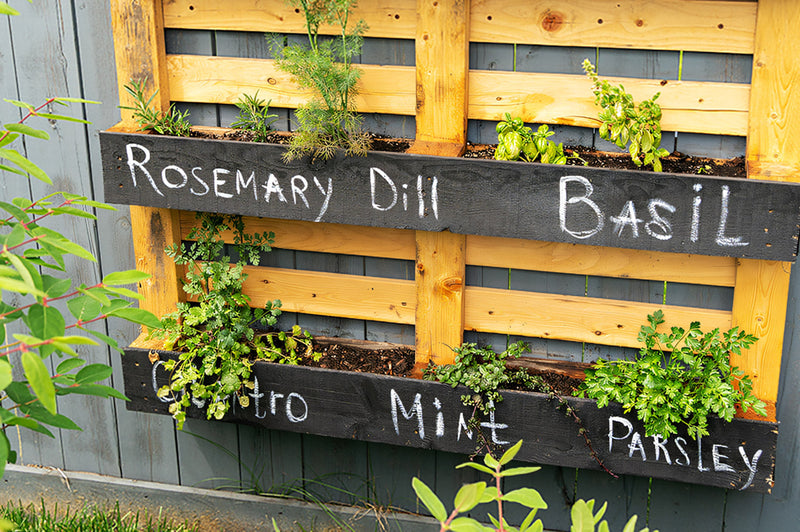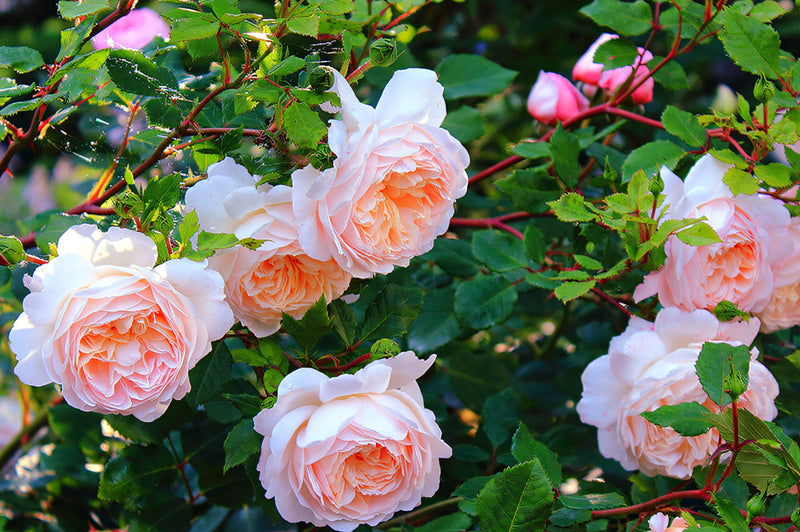

Steps to growing roses in Australia and how to prevent black spot
Planting and growing roses is made easy with our steps on how to take care of planted and potted roses, along with tips for rose black spot prevention and removal.
"It is the time you have wasted for your rose that makes your rose so important." – Antoine de Saint-Exupéry
Any avid green thumb knows the importance of patience when it comes to growing a beautiful garden. While roses are generally easy to grow, there are some people that tend to be more successful with the productivity of their plants than others.
There's nothing more thrilling than seeing the time and effort you've put into your roses than to see them blossom in all their glory, so why not give yourself the best head start and set up your roses for success? We know all about rose plant care and what roses need – abundant rose bushes are on the way with our helpful step-by-step guide on how to grow your roses.
How to grow roses in Australia
-
Quench their thirst
Rose bushes are notoriously thirsty plants especially when they're becoming established – they need around 10 litres of water two to three times a week for their first year! This is a great way to give your rose bushes the upper hand. You'll be able to water less frequently and deeper when they've established their roots further into the soil. It helps them become more tolerant to drought and dry, hot weather; you can deep-water your plants in the dry season with 10 litres a week. Make watering your roses easy by installing a dripper system below mulch to maximise moisture and minimise evaporation, plus it looks tidy and helps the plant stand out in your garden.
-
Give them the nutrients
Rose plants are excellent feeders and need a soil of pH 6.5-7.0 to maximise their nutrient uptake. It's always a good idea to check your soil pH levels and adjust accordingly – a good indicator of high pH is when leaves go yellow, are stunted or die off. Having a well-fertilised rose bush creates an ideal environment for growing garden roses. Using rotted manure and compost are great ways to use old food scraps and give your rose bush new life, but only add new fertiliser strictly three times a year: the first flush of leaves, the beginning of summer and at the beginning of autumn.
For successful rose plant care, have your roses planted in well-drained soil and fertilise at these times. Be careful not to over fertilise your rose plants; maintain healthy rose plant care and flower production by adding a regular diluted treatment mix of Eco Oil, Eco Fungicide and Charlie Carp to prevent pests, fungal disease and foliar feeding.
-
Get them sun-bathing
Growing roses in Australia is fairly easy because of the generous amounts of sun we experience throughout the year, even in the winter. Rose bushes and plants thrive in the sunlight, so they need around 6-8 hours of sunlight exposure each day to maximise their plant and flower health. Find the best location for planting and growing roses in your backyard that will give you an advantage year around.
It's best to avoid planting your roses near other trees and bushes as they can cast a shadow on your rose bushes. Remember to check in on your rose bushes and if they aren't thriving like they should be, relocate them to a sunny area when they are dormant after they've been pruned.
Growing roses in pots, made easy

You don't need to grow your roses in your garden bed, especially if you have limited space or a courtyard you want to spruce up with lovely roses! They survive well in pots and need enough watering that can flow freely from the pot, so it doesn't cause root rot. During the hotter weather, roses in pots should be watered every one to two days which is made easy when you have your Deluxe Hand Spray for precision when watering.
What is black spot and how to prevent it

Growing roses can take some trial and error, sometimes resulting in the dreaded black spot. It's a common problem with many rose growers, which is a result of humidity and thick growth on the rose bush itself. Black spot is a problem that can be dealt with and prevented when you've got the right tips and tools at your disposal. Here's what your roses need to remove and prevent black spot:
- Remove and destroy any leaves with disease on them.
- Lightly prune the rose plant that makes way for better airflow through the middle of the bush.
- When the most severe frost is over for the season, prune branches that cross over others and prune with a 'cup-like' shape for maximum airflow and sun exposure.
- Remove around one-third of the branch length to keep the rose bush compact and tidy, removing finished flowers and some stem, giving opportunity for new buds to form.
Pope's DIY tip
Having the right tools goes a long way with pruning your rose bushes. Our All Purpose Pruners are designed for comfort and ideal for shaping your rose plants for success.
